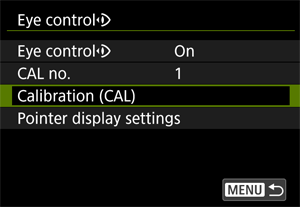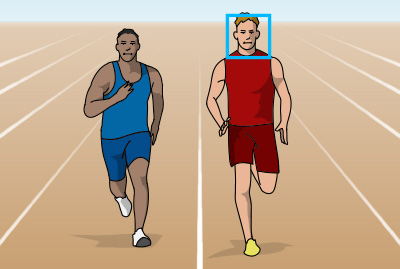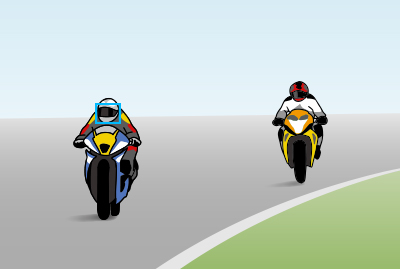5-5-1 Recommended Settings for Eye Control (Used with Tracking)
Eye control allows you focus on subject with the AF frame by looking through the viewfinder. This section covers recommended settings for effectively using eye control.
Preparations: Make sure to calibrate this function before using it

Registering your eye's characteristics with the camera is called calibration.
- We recommend calibrating multiple times in both horizontal and vertical positions.
- Register the results of both horizontal and vertical calibrations using the same number.
- When using the camera both with and without glasses, register the results with different numbers.
- Repeatedly calibrating the same number in varying ambient brightnesses will improve eye control precision.
We recommend using eye control in combination with tracking.
Using [Whole area tracking Servo AF] allows you to start tracking even if you do not place the AF frame on the exact center of the subject with eye control.
Combining eye control and tracking allows you to capture part of the subject with your eyes, then the camera will determine the optimal tracking location for eye AF or head detection AF.
Recommended scenes for eye control


Note
- Eye control is useful not only for sports, but also for quickly and intuitively moving the AF frame for focusing snapshots and portraits.
- Eye control may have difficulty tracking scenes with significant movement and when subjects move randomly. In these cases, we recommend switching to the Multi-controller or Smart controller to follow the subject.
If you want to use eye control to switch subjects during a continuous shooting, we recommend that you always display the pointer ([Pointer display settings] [Pointer display] [On]) so that you can see where your gaze is.